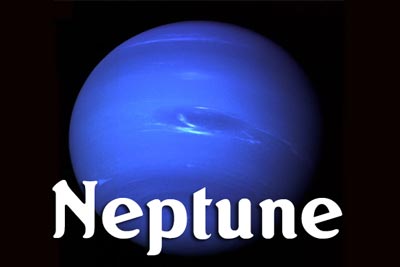
Though the existence of Neptune was predicted by mathematicians in 1845, it was first seen through a telescope on September 23, 1846, from the observatory in Berlin. Seventeen days later, its largest moon, Triton, was also discovered. For its bluish look, the planet was named after the Roman god of the sea.
The orbit of Neptune is elliptical and oval shaped. It keeps the planet at an average distance of almost 4.5 billion kilometers from the sun and the planet goes around the Sun once in every 165 years.
The interior of Neptune has two layers, a core and a mantle. The core is rocky and is considered to be 1.2 times as massive as the Earth. The extremely hot and dense liquid mantle is composed of water, ammonia and methane. The mantle is approximately ten to fifteen times the mass of the Earth. Neptune emits nearly 2.61 times the amount of the sunlight it receives. Though the surface temperatures of Neptune and Uranus are more or less same, Neptune receives only 40% of the sunlight that Uranus does. Additionally, this large internal heat also powers the extreme winds found in the upper atmosphere of Neptune.
The upper atmosphere of Neptune is composed of mainly Hydrogen (89%), Helium (19%) and trace amounts of methane. Like Uranus, the atmospheric methane in Neptune absorbs the red portion of the sunlight, which results in the blue face of the planet. However, as Neptune’s blue is more vivid and bright, it is considered that, there must be some other unknown atmospheric component in the Neptunian atmosphere that is not found in Uranus’ atmosphere.
Despite the fact that, Neptune is far away from the Sun and its energy input is low, its winds are terribly turbulent. Neptune’s winds are considered to be three times stronger than that of Jupiter and nine times stronger than Earth's. It can reach up to 2,400 km per hour, the strongest winds ever recorded on any planet in the solar system. These winds were linked with a large dark storm, tracked by Voyager 2 in 1989, in the southern hemisphere of Neptune. This gigantic, oval shaped, counterclockwise-spinning ‘Great Dark Spot’ was large enough to contain the entire Earth. Neptune's winds blew the Great Dark Spot westward at 300 meters per second. Later, the storm seemed to have vanished from the planet. The Hubble Space Telescope observed in 1994, that the Great Dark Spot had already left Neptune and a different dark spot had appeared in the northern atmosphere of the planet.
Neptune has 13 known moons, six of which were discovered by Voyager 2. They are named after lesser sea gods and nymphs from Greek mythology. A 14th tiny, very dim, moon was discovered recently, in 2013. The largest moon of Neptune is known as ‘Triton’. It is spherical and it is the only large moon in the solar system to circle its planet in a direction opposite to its planet's rotation. This peculiarity of its orbit suggests that, Triton may once have been a dwarf planet that Neptune captured in the distant past. According to NASA, Neptune's gravity is steadily dragging Triton closer to the planet and millions of years from now, Triton will come close enough for the gravitational pull to be destroyed to pieces. Triton is extremely cold, with temperatures on its surface reaching about -235º C, which make it one of the coldest places in the solar system. Despite this deep freeze at Triton, Voyager 2 discovered geysers spewing icy material upward more than 8 kilometers, which proves the apparent warmth of its interior.
Compared with the rotation axis of Neptune, the main axis of its magnetic field is tipped over by about 47 degrees and its magnetic field is about 27 times more powerful than that of Earth.